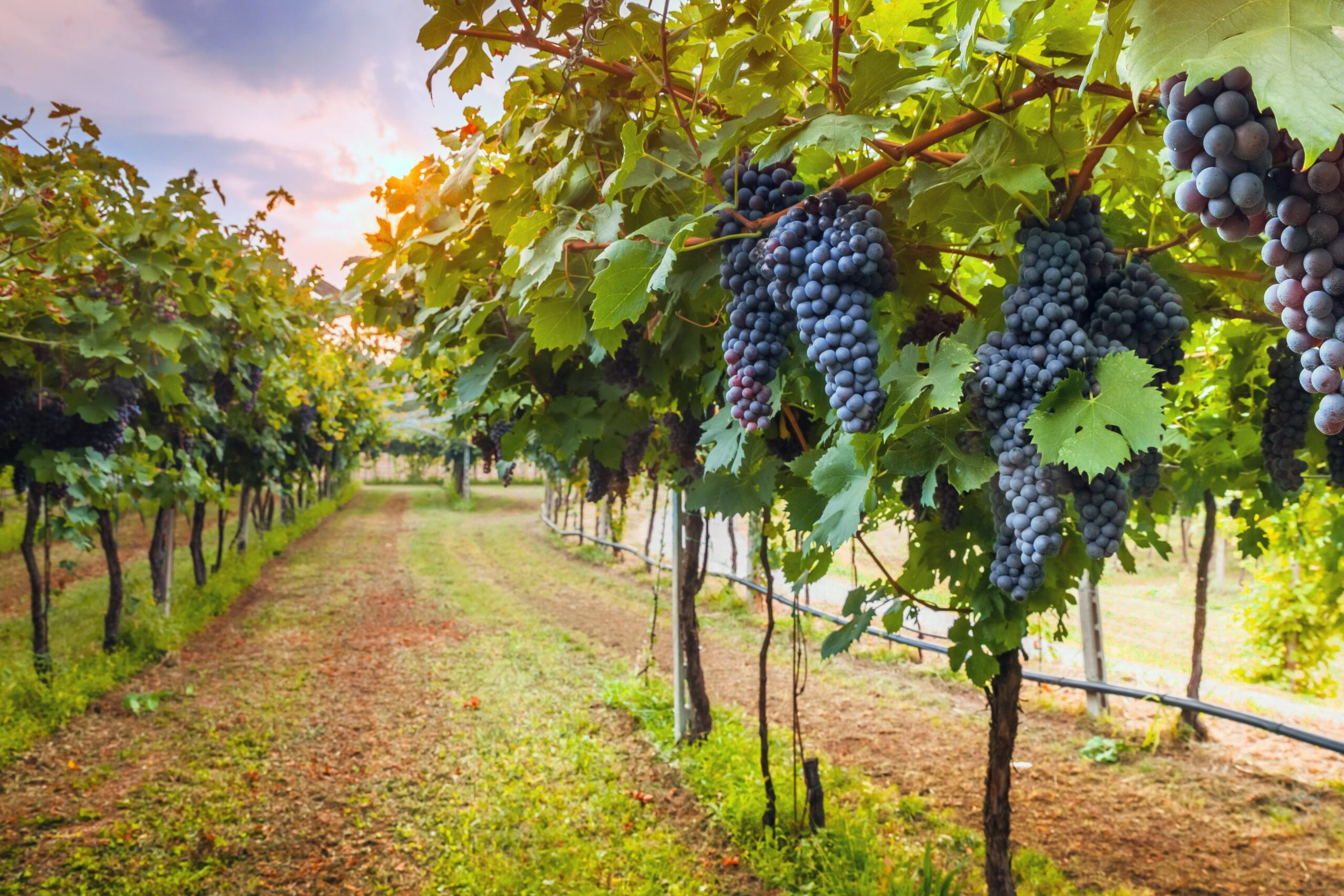Grapevines were introduced to Nigeria by pilgrims from the Middle East and Christian missionaries from Europe. Initially, grape cultivation was limited to small backyard plots and vegetable gardens, with little success due to a lack of knowledge.
Growing grapes successfully requires significant investment and careful maintenance. A well-managed vineyard can produce high yields and generate significant profits. Ripe grapes are enjoyed fresh as dessert and can also be used to make juice, raisins, and wine.
Read Also: How to Store Grapes
Climate and Soil Requirements
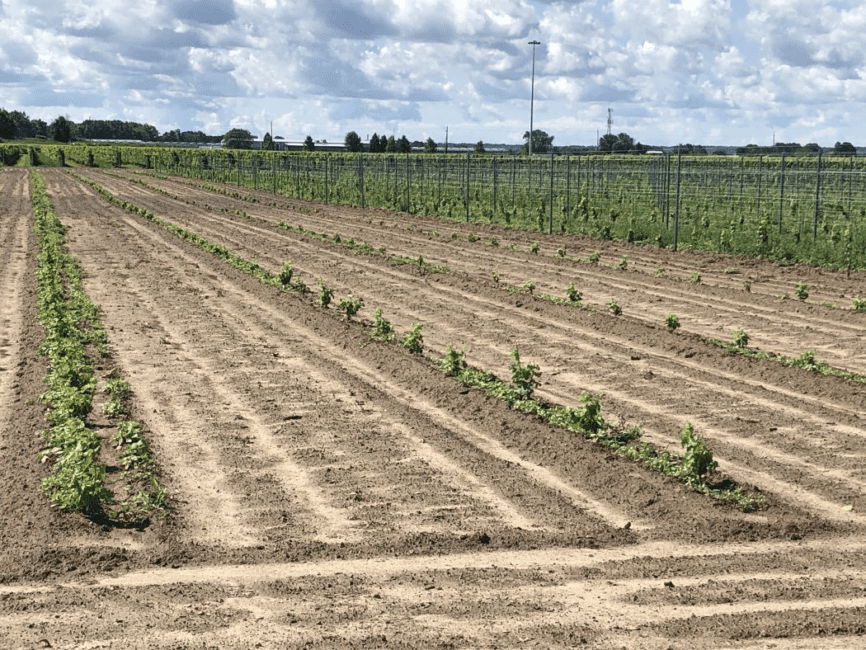
Grapes are typically grown in temperate and subtropical regions where the vines shed their leaves in winter, grow new shoots in spring, and mature in summer. In tropical areas, grapevines remain evergreen and yield poorly unless specific pruning techniques are applied, while the humid tropical conditions are prone to pests and diseases, making them unsuitable for grape cultivation.
Rain during flowering and ripening can lead to poor fruit set and berry splitting. Grapevines can withstand temperatures up to 35°C during the dry season, provided they are well-irrigated. Grapes can be grown on various well-drained soils, with silty and loamy soils being ideal. Acidic soils should be fortified with calcium.
Varieties and Uses
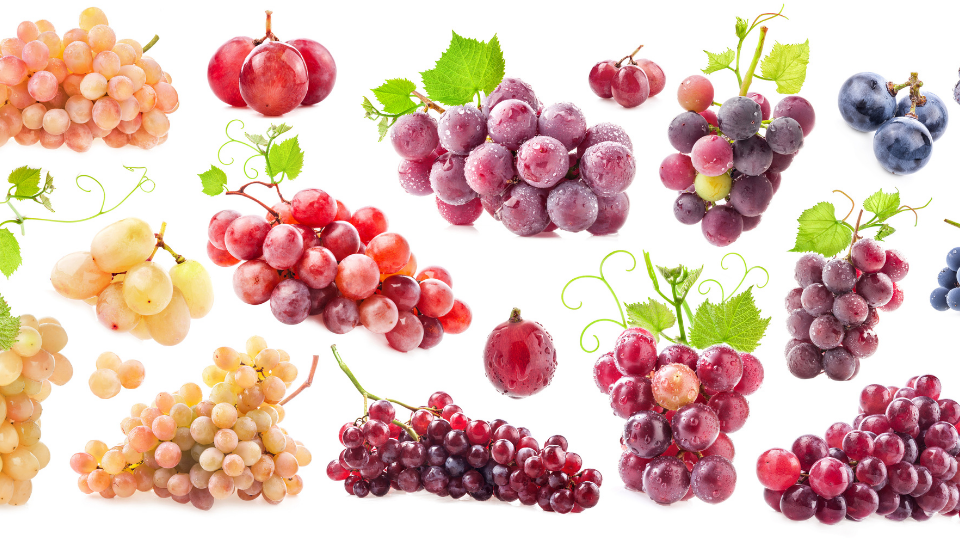
1. Anab-e-Shahi: Table and dessert grapes.
2. Black Hambury: Juice grapes.
3. Thompson Seedless: Raisins and desserts.
4. Muscat of Alexandria: Wine.
5. Blue Grapes: Wine.
Propagation
For large-scale cultivation, grapes are propagated by cuttings. Seed propagation is used mainly for breeding purposes. Grafting and budding on rootstock can be done to increase resistance to pests or enhance the vigor of weaker varieties.
Cuttings should be made from mature wood from the previous season’s growth, and each cutting should be about 8mm thick, with at least three buds. Cuttings should be protected from drying out and planted before any root or shoot growth occurs.
Prepare nursery soil that is well-fertilized and free of weeds. You can also use polythene bags to raise seedlings for transplanting. Plant one cutting per bag, ensuring that one or two buds are above the soil surface. Water the cuttings regularly until they establish good roots and are ready for transplanting.
Land Preparation and Planting
Grapevines are usually planted in pits, though plowing and harrowing the land at the beginning of the rainy season is preferable. Plant vines at equal distances using the following spacing:
1. Anab-e-Shahi: 5 x 5m.
2. Thompson Seedless: 2.5 x 2.5m.
3. Black Hambury: 3.5 x 3.5m.
4. Blue Grapes: 3.5 x 3.5m.
Dig rectangular pits of 72 cm deep by 50 cm wide at the specified distances. Mix the topsoil with well-decomposed organic matter and 5 kg of single phosphate fertilizer before planting the rooted cuttings, aged 6–12 months, from January to June. Plant the cuttings deep in the center of the pit, with half of the plant exposed. Compact the soil and water thoroughly.
Staking
Support the vine with a 2-meter stick painted with tar or old engine oil to prevent termite attacks. It takes about one month for transplanted young plants to establish. As the vine grows, allow only one main shoot to grow, tying it to the stick every half meter. Nip off all side branches to ensure the main shoot reaches a height of 2 meters.
Read Also: Pierce’s Disease (Grapes): Description, Damages Caused, Control and Preventive Measures
Training and Pruning
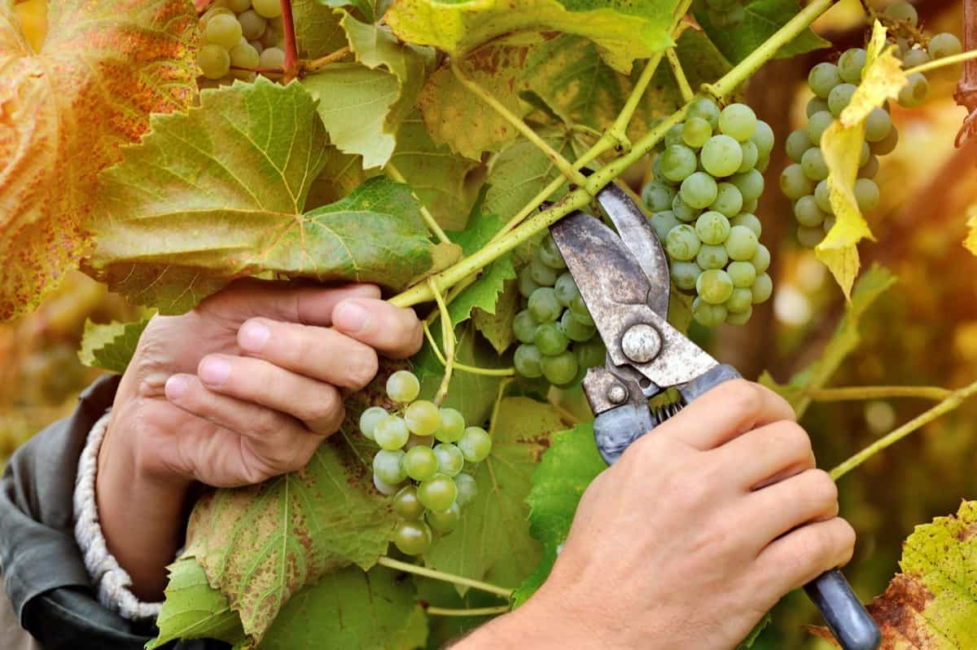
Training and pruning are crucial for grapevine management:
1. Trunk (Main Stem): A single stem raised up to 2 meters in height.
2. Arms (Secondary Stems): Two horizontal arms extending from the main stem.
3. Tertiaries: Shoots initially allowed to extend up to 2 meters.
4. Cane: Pencil-thick, brown shoots.
5. Spur: A cane cut back to one bud to produce next year’s fruiting cane.
In Nigeria, the overhead horizontal bower system is most suitable for high yields. Pruning is done twice a year: in September to secure fruit and in March after harvest. During March pruning, cut back the cane to produce the spur and remove all tendrils. Bury all leaves in the soil and apply manure 3–5 days before pruning.
Manuring
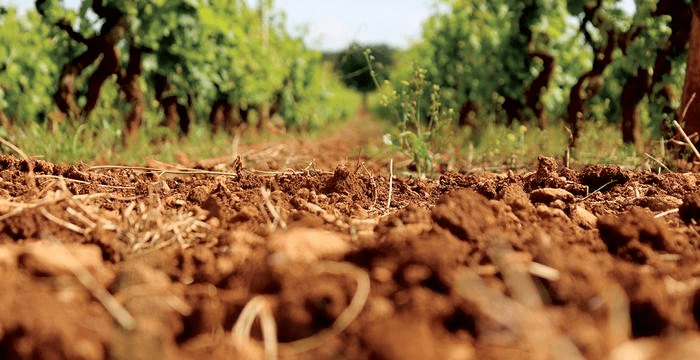
Grapevines are heavy feeders and require large amounts of manure and fertilizers. After planting, apply a compound fertilizer (15:15:15) at a rate of 50g per plant every two weeks, starting one month after planting until five months later.
Apply manure at 100kg per plant around the base of the vine and hoe it into the soil. Apply manure once during each pruning, followed by 15:15:15 fertilizer at 2.5kg per plant in six doses at fortnightly intervals. After one year, apply muriate of potash at 2kg per plant during the September pruning.
Field Management
1. Irrigation: Water young vines every other day with 75 liters of water and mature vines with 350 liters every three days. Irrigation is unnecessary during the wet season unless there is a prolonged dry spell.
2. Weeding: Keep the vineyard free of weeds through occasional shallow cultivation. Avoid using herbicides for the first 3–4 years.
Harvesting
Harvest grapes only when fully ripe, as they do not ripen further after picking. Grapes typically ripen 125 to 150 days after manuring. Indicators of ripeness include a waxy bloom on the fruit, characteristic color, slight thickening of the juice, easy detachment of berries, browning of cluster stems, and sweetness of the berries.
Grapes start bearing fruit in the second year after planting, with yields increasing as the vines age. Heavy yields one year may result in lower yields the following year due to plant exhaustion. With good management, a vineyard can produce fruit for up to 25 years.
Pest and Disease Control
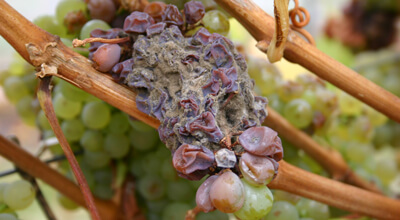
Grapes in Nigeria are mainly cultivated during the dry season, reducing the risk of diseases. However, you may encounter the following issues:
1. Powdery Mildew: Affects berries and leaves; control with weekly sulfur spray.
2. Downy Mildew: Affects twigs, buds, flowers, and fruit; control by pruning and burning affected parts.
3. Anthracnose: Affects leaves, twigs, and fruits, especially during the rainy season; control by pruning and spraying with fungicides.
4. Termites: Attack roots and stems; control with insecticides.
5. Birds: Cover fruits with cloth bags or netting to prevent damage.
In conclusion, grapevine cultivation is primarily suited for temperate and subtropical regions. However, with proper management, it can also be successfully grown in tropical areas with distinct rainy and dry seasons, such as northern Nigeria. Grapevines require intensive care and management, but the fruits can be enjoyed fresh or used in winemaking.
Read Also: Complete List of High Fiber Foods you Should Know About

